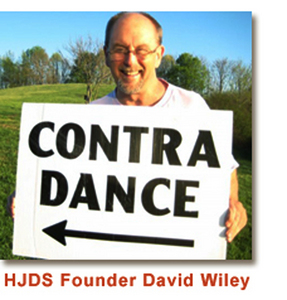

David Wiley is hooked on contra dancing. He founded the Historic Jonesborough Dance Society in 2005.
Contra dancing is a very old form of traditional dance done by dancers of all ages and abilities. The music has roots as old or older than the dance form itself and is frequently of Celtic or Appalachian origins. The tunes are most often jigs and reels.
Contra dancing has evolved from the French and English Country dancing of the seventeenth and eighteenth centuries, according to dance historian Bob Dalsemer, director of dance at the John C. Campbell Folk School in Brasstown, NC. Contra dancing uses figures common not only to those two genres but also to Irish Country Set dancing and American Square dancing. The Irish sets developed from the dances of Brittany, a region of France with strong ties to Ireland, Scotland, and Wales. The term "contra" is descended from a French corruption of the English term "Country" Dance.
New dances have been written to dance tunes possibly dating as far back as a genre known as "Early Music," the first uniquely western music. Throughout a long evolution, both the music and the dance figures have adapted to the culture and values of the time and locale in which they were performed. A similar dance form is found in Martinique, home to descendants of Irish immigrants, where a typical Caribbean style of movement has been added. In the United States, bands of young musicians incorporate jazz elements with traditional tunes.
Today, contra dancers in groups of two pairs begin the dance in two long lines of facing partners. Each group of two couples steps through the dance one time before progressing either up or down the line to dance with a new couple. The eight to ten figures in a dance are then repeated. Participants dance with everyone in the line.
Choreographers have developed new dance figures, yet some of the oldest dances are still popular. Dancers practice the dance in a "walk through" instructed by a caller who will continue to cue the dance once the music starts until it is well learned. Newcomers often dance an entire evening when they discover how easy it is to learn the figures and how much help is available from others. Lately more and more teen-agers and young adults are filling the ranks along with the Baby Boomers and grandparents.
THERE'S MORE:
-- Contra Dances This Month
-- Advice from Developer of Dancing Contras DVD
-- Back to the Main Story: There's a Gypsy in All of Us